Strange Neptune
From giant storms and icy geysers to tilted orbits and weird spins, Neptune and its moons have many surprising features.
By Emily Sohn
Astronomers look for rules. They seek theories and develop models that tidily explain how planets form, how moons move, and how the universe came to look the way it does.
But these scientists also keep finding exceptions to their rules. In our planetary neighborhood, Neptune is one of the more delinquent objects.
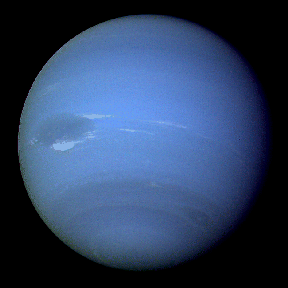
This image of Neptune was captured by the Voyager 2 spacecraft in 1989.
NASAThe eighth planet in our solar system is about 2.7 billion miles from the sun and very cold. Yet some mysterious source of energy powers winds that gust up to 1,000 miles per hour. Neptune’s moon Triton, which spouts geysers of ice, orbits the planet at a weird angle. And unlike the gas giants Saturn and Jupiter, Neptune and its neighbor Uranus are heavy and made of ice and rock.
These and other unusual features have puzzled scientists for decades. “Neptune is peculiar,” says Craig Agnor, a planetary scientist at the University of California, Santa Cruz.
Recent discoveries have added to the intrigue. “The outer solar system is where we’re making discoveries right now that are changing our fundamental understanding of the solar system,” Agnor says.
Although there’s nothing in the works yet, two teams of researchers recently developed proposals for a possible mission to Neptune.
Crazy moons
Our only close look at Neptune and Triton came in 1989, when the Voyager 2 spacecraft took pictures of both objects. In the meantime, astronomers have observed the blue planet with telescopes on Earth and in space.
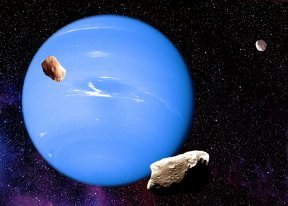
Triton is the largest of Neptune’s 13 known moons, or satellites. Several of them were discovered in just the past few years. And these moons are particularly quirky, Agnor says.
Most satellites fit into one of two categories. Satellites that orbit close to a planet, like Earth’s moon, follow a roughly circular path around the planet’s equator, moving in the same direction in which the planet spins. More distant satellites tend to have strange, tilted orbits. Compared with the spin of their planets, they sometimes orbit in the opposite direction.
Many of Neptune’s moons, including Triton, break these rules. Triton has a tilted orbit and travels in a direction opposite to Neptune’s spin, even though it’s fairly close to the planet.
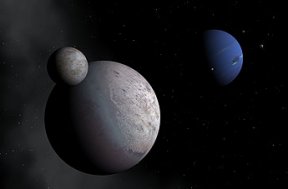
It’s possible, Agnor suggests, that Triton used to be part of the Kuiper belt, a wide band of icy bodies beyond Neptune’s orbit. What’s more, Triton might once have had a satellite of its own.
Agnor’s theory builds on recent studies showing that about 10 percent of Kuiper belt bodies, including Pluto, have satellites. When Triton and its buddy passed by Neptune, the planet’s gravity could have pulled them apart, slowing Triton down and capturing it as a moon.
If true, Agnor’s model gives insight into the early days of our solar system, says Dave Atkinson of the University of Idaho in Moscow. Atkinson was a member of one of the Neptune mission proposal teams.
Mission to Neptune
Sending a mission to uncover Neptune’s secrets would be useful, Atkinson says, but it’s easier said than done. Neptune is so far away that it would take between 6 and 14 years to get there, he says, depending on the technology used.
Once there, a spacecraft would face frigid temperatures and powerful windstorms. Some scientists speculate that there’s liquid water deep inside Neptune’s core, but no technology exists that would allow a probe to survive the high pressures inside the planet’s depths. It would also be impossible to send signals back to Earth from such an environment.
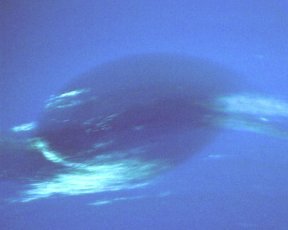
Ideally, a Neptune mission would also carry a lander to investigate Triton’s icy geysers. The problem with this plan is that the moon’s atmosphere is too thin to support a parachute like the ones that have delivered landers to the surface of Mars.
Instead, a Triton lander would have to use rockets to slow itself down. This would require extra fuel and equipment, which are both heavy and expensive to transport.
“Given the cost and complexity . . . of getting a lander to the surface of Triton, is it worth it for the amount of science we would get back?” Atkinson wonders. “That’s the question I don’t know if we can answer.”
Moving outward
Whether a probe lands on Triton or a spacecraft simply flies by, visiting Neptune would give scientists insight into more than just our own planetary neighborhood. Scientists continue to discover Neptunelike planets around other stars. And understanding how our own solar system fits together is the first step toward understanding how others work.
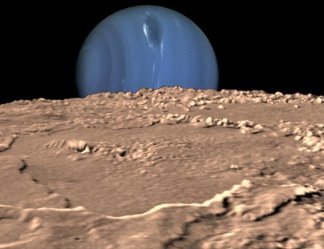
“We study giant planets to look inside at ourselves and to look far away,” Atkinson says. “They’re a connecting point between us and the universe out there.”
In a move toward exploration of the outer planets, scientists are working on building lighter, smaller probes. They’re also developing new technologies that could operate in extreme environments.
The earliest a spacecraft could arrive at Neptune would be 2033, and getting there that soon is unlikely. By then, many of the scientists working on the project now will be long retired, and you could be taking their place.
Researchers such as Atkinson hope you will.
“I still feel like a kid when I do this stuff because it’s so cool,” Atkinson says. “We’re like kids on Christmas Day. People get so excited, even when [a Neptune mission] might be . . . years away.”
Going Deeper:







